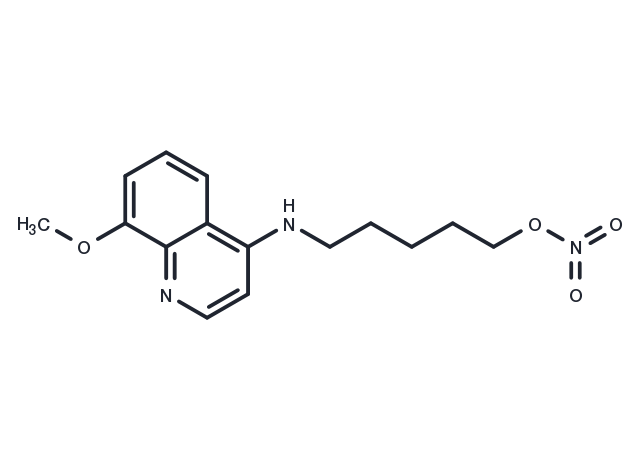Powder: -20°C for 3 years | In solvent: -80°C for 1 year


5MPN is a novel compound that functions as a highly potent and selective inhibitor of 6-phosphofructo-2-kinase/fructose-2,6-bisphosphatase 4 (PFKFB4). This compound demonstrates oral activity and serves as a first-in-class inhibitor. Through competitive inhibition of the F6P binding site, 5MPN effectively hinders the functionality of PFKFB4, with a Ki value of 8.6 μM. Importantly, it exhibits no inhibitory effects on PFK-1 or PFKFB3. By specifically targeting the sugar metabolism of tumors, 5MPN exerts its anti-proliferative effects on various human cancer cell lines.

| Description | 5MPN is a novel compound that functions as a highly potent and selective inhibitor of 6-phosphofructo-2-kinase/fructose-2,6-bisphosphatase 4 (PFKFB4). This compound demonstrates oral activity and serves as a first-in-class inhibitor. Through competitive inhibition of the F6P binding site, 5MPN effectively hinders the functionality of PFKFB4, with a Ki value of 8.6 μM. Importantly, it exhibits no inhibitory effects on PFK-1 or PFKFB3. By specifically targeting the sugar metabolism of tumors, 5MPN exerts its anti-proliferative effects on various human cancer cell lines. |
| Targets&IC50 | PFKFB4:8.6 μM (KI) |
| In vitro | 5MPN, ranging from 0 to 30 μM over 24 hours, suppresses PFKFB4 expression in H460 cells, and at concentrations of 0 to 50 μM from 0 to 72 hours, firstly diminishes F2,6BP levels, glycolysis, and ATP production in H460 NSCLC cells, consequently inhibiting cell proliferation. Moreover, 5MPN at 0 and 10 μM for 6 to 24 hours both triggers apoptosis and halts cell cycle progression in H460 cells. At doses of 0.1, 1, or 10 μM, it significantly reduces PFKFB4 activity and lowers F2,6BP concentrations in a dose-responsive manner. Similarly, application of 5MPN from 0 to 30 μM over 48 hours across various cell lines (H460, H1299, H441, H522, and A549) results in a dose-dependent suppression of cell growth. Notably, 5MPN also leads to G1 arrest in LLC cells in vitro, akin to its effect on H460 cells. Western Blot Analysis and Cell Proliferation Assays in H460 cells exhibit inhibited PFKFB4 expression and reduced cell proliferation at 0~30 μΜ and 0~50 μM, respectively, over 24 hours and 0~72 hours. Apoptosis and Cell Cycle Analysis indicate induced apoptosis and cell cycle arrest at concentrations of 0 and 10 μM over intervals of 6, 12, and 24 hours. |
| In vivo | 5MPN (120 mg/kg; p.o.) effectively inhibits the growth of Lewis lung carcinomas (LLC) in C57BL/6 mice and H460 human lung adenocarcinoma xenografts in athymic mice, without impacting the animals' body weight. Additionally, a decline in the number of Ki67-positive cells within LLC xenografts indicates that 5MPN potentially interferes with cell cycle progression in vivo[1]. This was achieved through oral administration at a dosage of 120 mg/kg. |
| Molecular Weight | 305.334 |
| Formula | C15H19N3O4 |
| CAS No. | 47208-82-2 |
Powder: -20°C for 3 years | In solvent: -80°C for 1 year
You can also refer to dose conversion for different animals. More
bottom
Please see Inhibitor Handling Instructions for more frequently ask questions. Topics include: how to prepare stock solutions, how to store products, and cautions on cell-based assays & animal experiments, etc.
5MPN 47208-82-2 inhibitor inhibit
